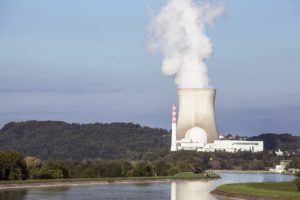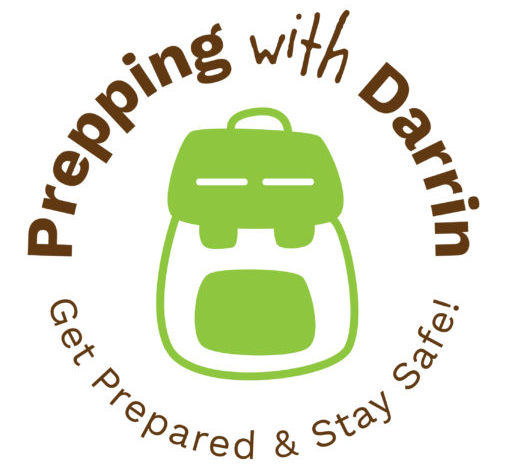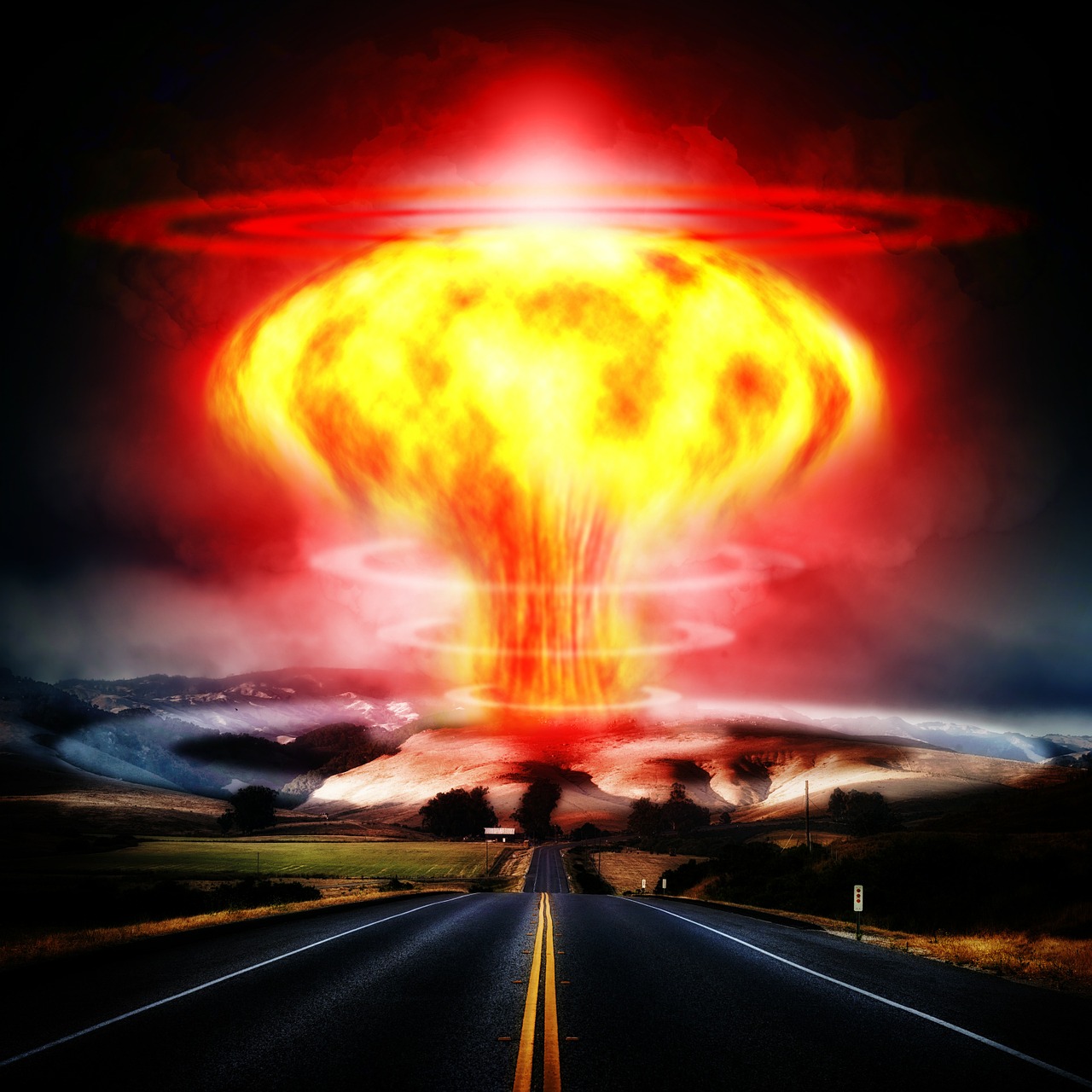We may earn money or products from the companies or products mentioned or linked to in this post.
Last week I told you about the 90% Die off rate. This week I want to go in to detail of what could cause that. If you live within 100 miles of a Nuclear power plant then you need to read this! That paired with the renewed threat of a nuclear war, you need to know about how to survive nuclear fallout!
- How does a Nuclear power plant work?
- What happened to Chernobyl in April 1986?
- What happened to Fukushima on March 11th 2011?
- How do I find out if I live near a Nuclear power plant?
- How can I protect my family from Nuclear Fallout?
- How far can nuclear fallout travel?
- How long does nuclear fallout last?
- How to build a fallout shelter to survive a nuclear attack!
- Nuclear attack survival kit.
How does a Nuclear power plant work?
They generate the electricity with heat. The splitting of Atoms generate heat, that heat is used to make steam. When the steam releases, it pushes the turbine generators, spinning those is what actually produces the electricity.
The two most common types of Reactor’s that are in use today are the Pressurized Water Reactor (PWR) and the Boiling Water Reactor (BWR). Although, there are some other’s that are being thought up and some are actually in use today.

They work fairly similar to how coal plant’s and other power plant’s work. The big difference is the whole Nuclear Reactor part. Although it is safer for the environment because it doesn’t put off gasses into the atmosphere, but they can be very dangerous in the event of a long term power outage.
Nuclear Reactors need time to cool down. You can shut them down in about 3 to 5 second’s but they still need time to be cooled down properly. This time can take months to year’s under normal operating conditions.
What happened to Chernobyl in April 1986?
A safety test to simulate a station blackout power failure went awry. A combination of design flaws and the operators not following the ordered checklist were to blame. The safety systems were turned off during the simulation in order to properly complete the test, but as we can
see, things can and usually will go wrong.
An explosion of steam caused a graphite fire, the fire made strong updrafts for around 9 days. Plumes of Radioactive particles flew into the atmosphere. The Material created Nuclear Fallout over parts of Europe and western USSR (Ukrainian Soviet Socialist Republic).

Two workers died from the immediate blast. Over the next few weeks, 134 firemen and other worker’s were hospitalized for ARS (Acute Radiation Symptoms). Of those 134 individuals, 28 died within months due to the ARS. Within 10 years 14 more of the 134 would perish from cancer that was caused from the accident. There is still time for the death toll to rise
from the event’s that took place that night.
A Dose of 500 Roentgens an hour will usually lead to death. The worst hit areas were estimated to be around 5.6 Roentgens per second.
The radiation levels set alarms off at the Forsmark Nuclear Power Plant in Sweden, that was 620 miles away from Chernobyl. The first evacuation zone was just 10KM around Chernobyl. Ten days later it was expanded to 30KM or 19 miles.
What happened to Fukushima on March 11th 2011?
What set things in motion that day was the Tohoku earthquake with a magnitude of 9.0. The earthquake occurred underwater at around 18 miles down. It caused a powerful Tsunami that reached up to 133′ high of waves. Those waves knocked out the emergency generators that are there to operate the pumps that are necessary to cool the reactors.
This caused reactors 1, 2, and 3 to go into meltdown from March 12th to March 15th. It also caused the pool that stored spent fuel from Reactor 4 to overheat.
There were no deaths from the Radiation, but they do expect that in time around 130-640 could die from cancer induced by the radiation.
There have been some prior safety concerns at the plant. In 1967 when they were building the plant, they messed up with the layout of the emergency cooling system. In 1991 a backup generator failed for reactor 1 after it was flooded out, an engineer said that the generators could get damaged in the event of a tsunami. in 2008 an in house study showed that the
facility was prone to devastation in the event of a Tsunami, but the HQ insisted it wasn’t likely to happen and did nothing to improve the plant.
The evacuation zone was set at 12 miles to ensure fewer people would be affected from the radiation.
How do I find out if I live near a Nuclear power plant?
If you are unsure of any Nuclear Power Plants in your area. There you will find a map and a full alphabetical list of all the Nuclear Power Reactor’s that are operating today.
If you live within 50 miles of a Nuclear Power Plant then keep reading below for information on what you can do to protect your family in the event of a Nuclear Disaster. Just because you live outside of the 50 mile radius, it doesn’t mean your out of the danger zone.
How can I protect my family from Nuclear Fallout?
Up front you should know that I am not a Dr or Nutritionist, so you should seek medical advice from a trained professional before making any changes to your diet or supplements.
With things going on between Russia and Ukraine, the threat of a nuclear war with any other country getting involved directly to defend Ukraine, has gone up exponentially!
You will want to monitor the local radio station’s or EAS station. If you have pet’s, you’ll want to make sure you have enough food and water for them as well. You will need a place for the animal’s to relieve themselves. Either a litter box or puppy pads/old newspapers.
The thing about Nuclear Fallout is that you can protect yourself. You want to make sure that you do not inhale any of the dust that could be Radioactive. If you do get some particles on your body or in your hair, be sure to wash up ASAP and scrub down good. DO NOT USE CONDITIONER. Only use Shampoo for your hair, Conditioner will allow the particles and radiation to stay on the hair. That would lead to long term issues with cancer.
How far can nuclear fallout travel?
When Radiation or Radioactive materials get forced up into the atmosphere, the wind can blow it around in any direction, so that 50-mile mark goes out the window at this point.
Also keep in mind, once the fine particles on fallout reach the stratosphere, it can take years for it to all come down.
How long does nuclear fallout last?
Nuclear fallout could last up to five years or more! That is why you really need to get stocked up on supplies. The more time that has passed, the less potent the fallout becomes.
So if you’re able to tough it out inside for 5 or so years, you wouldn’t have to put yourself at risk of radiation poisoning from having to venture out for supply runs.
How to build a fallout shelter to survive a nuclear attack!
You would want to head down to your fallout shelter, that is if you have one. But if you’re like most of American’s, you don’t. So what else can you do?
Well, the first thing you’ll want to do is turn off the AC or Central heat and air unit. Then close all windows and outside door’s. Cover your window’s and vent’s with heavy plastic. Make sure there are no draft’s coming into the residence.
You can buy rolls of heavy duty plastic at most Hardware store’s. You’ll want to have enough plastic to cover all windows, exterior door’s, and vent’s. You would also want to pick up some long flat 1/8″ x 1″ wood strip’s. This will allow you to get a good and tight seal around the area that you are sealing up.
Nuclear attack survival kit.
Here are some things you will need to try to survive a nuclear attack:
- Poassium Iodide (KI)
- Prussian Blue
- CBRN-Approved mask
- NBC suit
- Radiation Reducing Gloves
- Digital Geiger Counter
Poassium Iodide (KI)
If you feel that you have had a high dose of radiation or you are being told by the Emergency Management officials, be sure to take some Potassium Iodide (KI). It helps block Radioactive Iodine from being absorbed by your thyroid gland. It doesn’t work with any other organs.
There are also some side affect’s of taking KI, you could have an allergic reaction, get a rash, inflammation and some gastrointestinal upset. More than 1 Dose in an infant can raise their risk of getting hypothyroidism later in life.
Prussian Blue
Prussian Blue can be taken to help remove radioactive Thallium and Cesium from the body. It is not recommended for children under 2 year old. But anyone over 2 years old can take it, including pregnant women. The side effects are stomach upset and constipation. You can only get it by prescription.
Once you are told it is safe to go outside, be sure to where a mask and suit if you have one. You do not want to inhale any radioactive dust. An NBC Suit and a CBRN-approved (formerly known as NBC) mask with extra filters would be your best.
CBRN-Approved mask
If you’re looking for the best mask possible then the MIRA SAFETY M CBRN Full Face Reusable Respirator-Mask is your best bet. Although it is more expensive you get what you pay for. One nice feature is the installed drinking system. That way you can stay hydrated while out and about. Now these do not come with filter’s. It takes the Certified CBRN filter 40 mm NATO.
Now with any mask you will run into the issue of not getting a good seal with your face. If you wear glasses or have a beard, it will not be able to get a good seal, so that would make it useless. If you need glasses to see, you might look into getting contact’s.
NBC suit
With a suit I suggest you go with the MIRA SAFETY Suit Disposable Protective Coverall with Hood and Elastic Cuff. You can buy these in different sizes and with different amount’s. DO NOT REUSE AFTER WORN OUTSIDE WITH FALLOUT! These are made to be disposable. If you put these on after they were used, you risk contaminating yourself with radioactive material. I Would stock up on these.
With filter’s for mask’s, they will expire and become less effective, so when you purchase extra filter’s make note of the made date and the expiration date. Now you can still use them as backup’s but if you have the ability to get new filters go ahead and get them. Use them at first, maybe by the time you use them up, the radiation would be less powerful and the older filter’s could be used.
Any time you get a new mask, you’ll want to test it out. You want to make sure you have a flush seal with your face. Everyone’s head is different so test them out before you need to use them.
Radiation Reducing Gloves
Also you will want to wear some Radiation Reducing Gloves that are Latex Free and Contain Lead (Thickness 0.20mm ± 0.05). These have a long cuff with anti-tear rolled hem internal natural rubber film (without lead) anatomic shape with slightly bent fingers and are powder-free
Digital Geiger Counter
A Geiger Counter will help you determine the radiaion levels in your immediate area. If you have to venture out, or suspect that there was an air leak with your fallout shelter, you can easily scan and detect the levels of radiation around you!
With anything you buy, it is best to buy in bulk because it is cheaper in the long run. But if you are strapped for cash, I would get what you can with the money you have! Now I don’t want you to go out and spend your last dollar on survival equipment and tool’s. You need to make a plan and budget out the money to get the stuff you need.
Remember to have as much food and water stocked up as you can. The less you have to go out into the unknown the better off you and your family are.
Stay safe out there!

